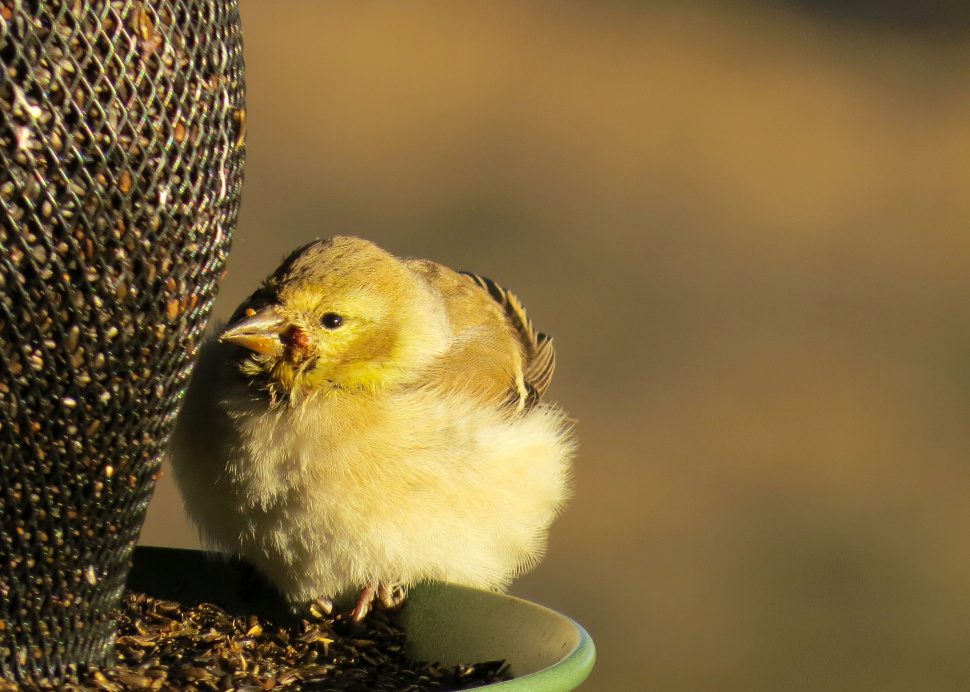Continued reports of sick or dead birds at backyard feeders across Northwest states are prompting fish and wildlife agencies to recommend people leave their wild bird feeders down, or take extra steps to maintain them.
“You can help to stop the spread of salmonellosis by discontinuing backyard bird feeding until at least April 1, to encourage birds to disperse and forage naturally,” said Washington Department of Fish and Wildlife veterinarian Dr. Kristin Mansfield.
The department first asked residents to remove or clean feeders in February in response to a die-off of finches, such as pine siskins, as well as other songbirds. Salmonellosis, a common and usually fatal bird disease caused by the salmonella bacteria is to blame. When birds flock together in large numbers at feeders, they can transmit the disease through droppings and saliva.
The first signs that a bird may have salmonellosis is often a seemingly tame bird on or near a feeder. Birds infected with salmonella become very lethargic, fluff out their feathers, and are easy to approach. Unfortunately, at this point there is very little people can do to treat them. The best course it to leave these birds alone and report them, and dead birds, to WDFW’s online reporting tool.
Discontinuing feeding of wild birds will not leave them without food supplies during the winter and spring months.
“Birds use natural food sources year-round, even while also using backyard bird feeders, so they should be fine without the feeders for another month,” Mansfield said.
If people do not choose to remove bird feeders, please clean them daily by first rinsing well with warm soapy water, then dunking in a solution of nine parts water and one part bleach. Finish by rinsing and drying before refilling. Also please reduce the number of feeders to a number you can clean daily, as well as using feeders that accommodate fewer birds (such as tubes rather than platforms) and spreading out feeder locations. Keep the ground below bird feeders clean by raking or shoveling up feces and seed casings and turn over or cover bird baths so birds cannot access them.
It is possible, although uncommon, for salmonella bacteria to transfer from birds to humans through direct contact with infected birds, droppings, or through domestic cats that catch sick birds. When handling birds, bird feeders or bird baths, it is best to wear gloves and wash hands thoroughly afterward.
Oregon Department of Fish and Wildlife wildlife rehabilitators are seeing an increase in reports of sick birds at feeders.
Calls to ODFW from Oregon bird lovers seeing dead birds in their yard and around their feeder typically increase with colder weather. When the weather turns cold, the energy demands on birds and other wildlife increase dramatically so a high energy seed meal at a bird feeder will bring in birds and congregate them, increasing the chance of disease transmission.
Pine siskins, nuthatches, chickadees and other seed-eating backyard birds are some of the most common species affected by these diseases.
“If you enjoy seeing birds and feeding them in winter, please provide a clean and healthy environment for them,” said Dr. Colin Gillin, ODFW State Wildlife Veterinarian. “When you feed birds, be sure to start with clean feeders and to disinfect feeders periodically.”
Avoid problems at bird feeders by:
Take down feeders and stop feeding for several weeks to a month if there are bird deaths at your feeder.
Providing fresh seed purchased recently.
Using feeders made from non-porous material like plastic, ceramic, and metal. These are less likely than wood to harbor bacteria and other diseases.
Cleaning feeders, water containers and bird baths monthly by rinsing with soapy water and then dunking the feeder in a solution of one third cup of chlorine bleach per one gallon of water.
Cleaning up old seed hulls and waste below the feeders by raking, shoveling, or sweeping material and discarding in the trash.
Spreading your feeding over several areas or feeders as not to congregate birds in one place.
Cleaning feeders more often (weekly) if you have large numbers of birds at your feeders.
Salmonellosis is suspected to have also been found in southern Idaho birds that frequent area bird feeders.
After reports of sick and dying birds began to reach biologists in northern Idaho, it appears that salmonellosis might have been detected in southern Idaho.
Over the last several weeks, Idaho Fish and Game biologists with the Panhandle Region have received reports of sick or dead wild birds.
“We all love to see wild birds come to the feeders in our yards” said Regional Diversity Biologist Lyn Snoddy, “but at times like this, we all need to collectively do what’s best for our wild bird population by removing and cleaning our feeders for at least a couple of weeks. This short term effort will help stop the suspected spread of salmonellosis in southern Idaho.”

